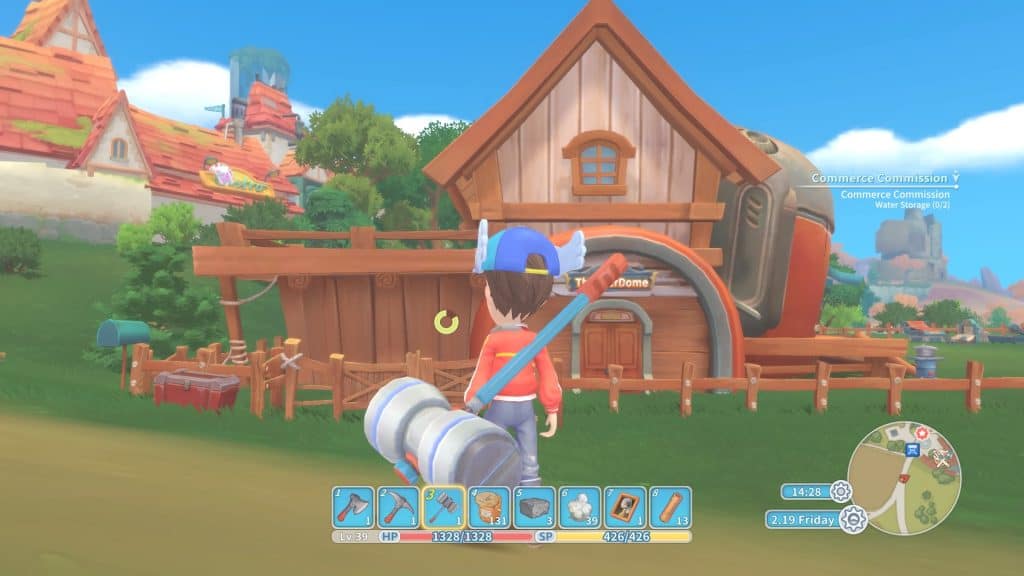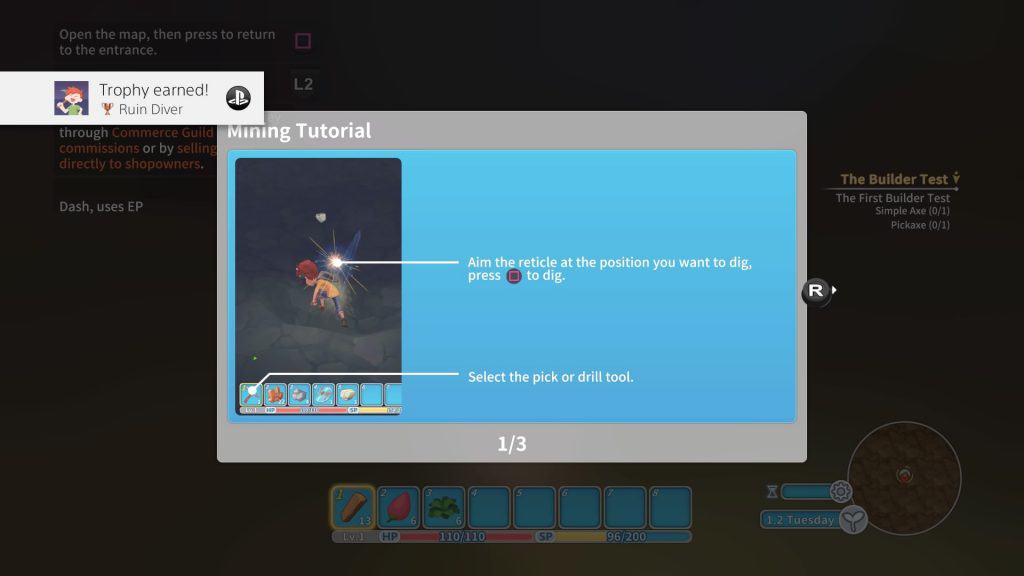Patience – if you can define the game in one word. If it teaches you something as you play along, it is, again, patience. My Time at Portia is a beautiful and colorful game developed by Pathea Games and published by Team17 for PC, PS4, Nintendo Switch, and Xbox One. It was released on 16th April 2019.
My Time at Portia (Review)

The game is a Role-playing Builder-sim set in a post-apocalyptic world. Even though there are parallels between My Time at Portia and Stardew Valley, the game stands on its own as the game’s core is somewhat different from other farm-sim games.
My Time at Portia – Story – Explained!

The setting is intriguing. Portia is a city in a post-apocalyptic world where humans’ trust in machines brought on an apocalypse. Now, humans are emerging out of the apocalypse and rebuilding their cities. The player inherits his workshop from his father, who has left the city for more adventures. The player’s goal is to develop his/her workshop to become the Premier workshop in the town against a few already established workshops, build the city, develop relationships with the town’s citizens, and basically, have a life. For doing that, the player will have to collect resources by cutting trees, Mining in mines, collecting relics and data discs from the old world to research and understand Technology better, and fighting certain mutated animals and villains who want to seize the Technology for themselves.

What is so good about this game is that each character is unique, and you can have any kind of relationship with almost everyone in the game. Each NPC has a defined role and job in My Time at Portia. This is a game where I have seen the highest number of NPCs contributing to the player’s character development, and the depth to each of the characters is excellent that you start caring for every NPC. Portia is a fairy town which has a mayor, a Commerce Guild which gives work to the builders, a school, two entrances to the city, a café, a restaurant, a game room in the restaurant, a Civil Corps office (Police equivalent in the town), a clinic, a furniture shop, a bakery, a clothing store, a tools shop, a bakery, a newspaper office, and even a barbershop. Above all these, there are two more buildings – a Church that warns against Technology, fearing another apocalypse, and a Research Centre which thinks Technology is required. Adding to this, we have an island, an adjacent desert, and some hazardous ruins in Portia, which adds to the variety.
My Time at Portia – Gameplay – Explained!

The game is more about developing your workshop, and you being a builder, would need to build and assemble things in your workshop based on the requirements in the Commerce Guild or from certain NPCs. This is the core of the game, and the main missions and even many side missions center around this. The player needs to look at his/her handbook for a list of resources he/she would need to build that object and wait for a certain amount of in-game time depending upon the object that he/she is creating. However, we have plenty of other things to do as we wait. We can set up a farm with plants and trees. We can develop an animal farm. We can do errands for others or even play/date fellow citizens. In fact, we can even play Rock, Paper, Scissors with the NPCs as well to pass the time. Cutting trees and Mining are literally grinding for resources. However, we get Ores, Data Discs, and other old-world relics when we mine. These Data Discs can be either given to the Church in exchange for plants or Trees or given to Research Centre for getting blueprints of new objects to be built. More often than not, we tend to choose the Research Centre as we need more blueprints. We can also improve our workshop, house, and purchase land as we progress in the game.
The map slowly expands as we progress in the game and never gives us the feeling that it is vast. We can even have fast travel between many points by building and placing “Dee-Dee stops” across the town. Dee-Dees are nothing but auto-rickshaws that drop us point-to-point.

The most exciting aspect of the game was the Play/Date system which was fun to play as we had to go on dates with NPCs. We can select the NPC whom we like and date them once an in-game week. Making choices which the NPCs like will better our relationship with them, and doing the opposite will bring the relationship down. The better the relationship, the more the side quests to fulfill, which means more money and reputation to your workshop. In addition to the Play/Date, the relationship can be improved by running errands for the NPCs when they ask for your help or taking on their needs from Commerce Commission and fulfilling them.

Fighting is purely button-mashing, and it is not taken seriously in the game. Even if we die mid-fight, we are respawned again with full health in most cases. Only during one fight did I experience a “Game Over” screen. However, this doesn’t mean fighting isn’t fun. It is still fun to fight some mutated creatures who give us loots all the time. Resource gathering is a significant part of the game, and just when resource gathering becomes dull, it takes a backseat. You can hire certain folks to deliver your resources for a certain fee. This becomes very useful as well. After a point, you can just focus on the core gameplay and leave the other stuff to NPCs to do it for you.
What works: Beautiful locales and fantastic plot and setting make this game worth your time. The variety of missions and the unique NPCs add to the positives of this game. There is no ending to the game. Hence, you can immerse yourself in Portia as long as you want to, even after the story ends, even though you will be only getting Commerce Commissions and character-related quests after the main story ends. The variety of choices regarding how the story progresses based on your relationship can be explored in subsequent plays giving replay value for the game.
What doesn’t work: First and foremost, there is no voice acting for many of the characters, and the cutscenes just trigger the text without audio. This looks weird at parts. Waiting time between constructions is somewhat high, and initially, you have lots of things to do, and hence, we do not mind the waiting time as we finish other quests. As you slowly progress, everything, including resource gathering, gets automated, and you tend to just sleep off days together for crafting objects and passing the time. Button-mashing fights are ok, but you don’t want the game to be this straightforward. Respawning every time near a boss when we die means that we will not value death, and we can die again and again and still defeat the boss just to progress the story. You can marry someone in the game and even have children with them. But the point of it? No one knows as your child remains a child even for years together as there is no growing up aspect involved. This is very weird when you want to live a life in Portia.
Verdict: Go for this beautiful game if you are either a fan of RPGs or if you have some patience and you will enjoy it so much that you will remain in Portia even after the main story ends. Else you might be disappointed.
PS: A successful Kickstarter campaign has now ensured that a sequel to My Time at Portia called My Time at Sandrock is in the works, and early access is expected after May 2021. The game is slated to release on all consoles and PC in 2022.
Nikhil is an optimist who believes that tomorrow is always a better day. He is a nerd who loves books, games, comic books, and movies in the same order. He aspires to be an author of fiction someday.
My Time at Portia

The game is a Role-playing Builder-sim set in a post-apocalyptic world. Even though there are parallels between My Time at Portia and Stardew Valley, the game stands on its own as the game’s core is somewhat different from other farm-sim games.
Price: 29.99
Price Currency: $
Operating System: PlayStation 4, Nintendo Switch, Xbox One, Microsoft Windows
Application Category: Game
3.5
